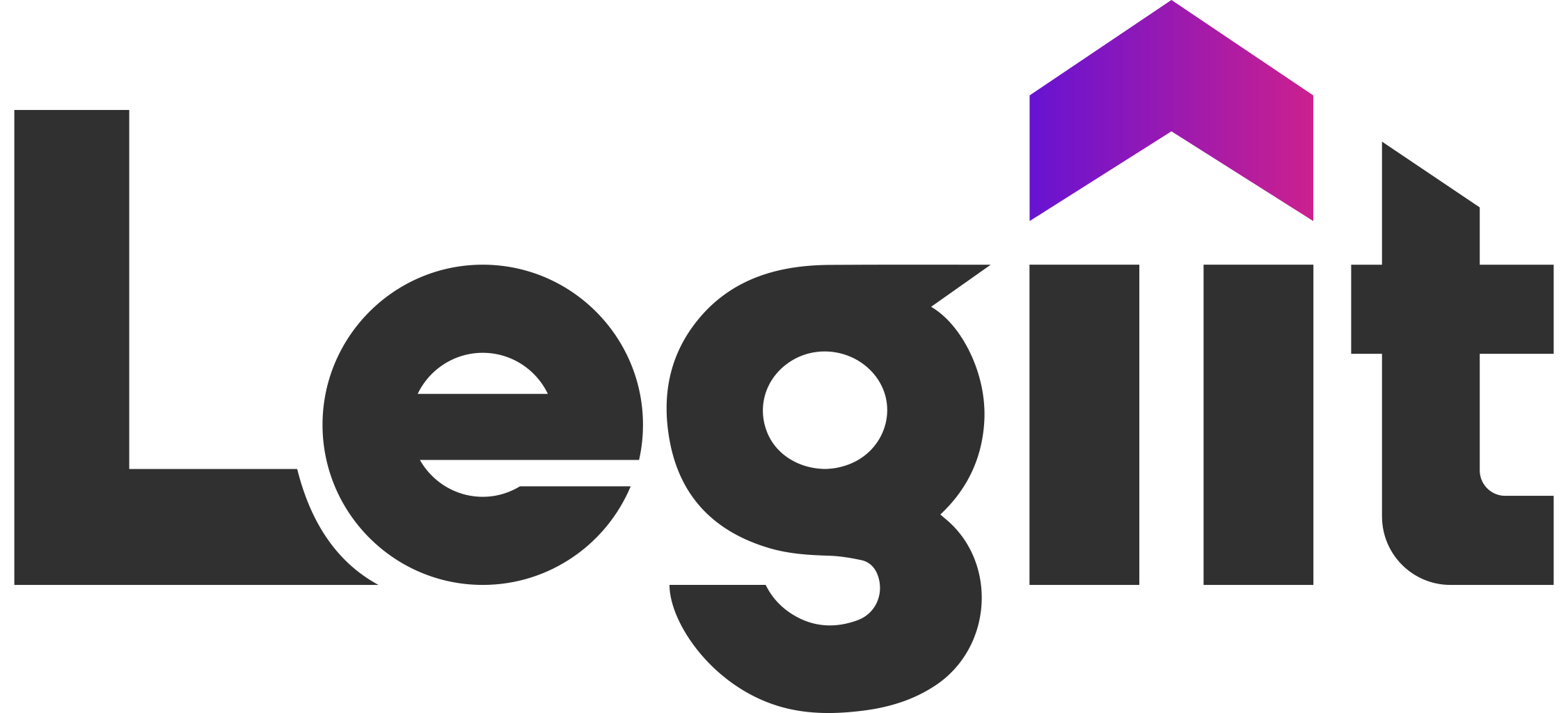Hundreds of millions of websites across diverse niches compete daily to rank their content on top. With such cut-throat competition, traditional SEO practices are not enough to give your website the visibility it deserves.
For businesses, website traffic makes all the difference, so how do you ensure that your brand or content reaches its targeted audience? Simple - Linking strategy: an SEO technique aimed at increasing traffic to your website through hyperlinks from other sites.
Easier said than done, building strategies for backlinks is a complicated process, one that requires extensive research. But right now, we have compiled the best strategies for link building to help you help your website get ranked higher and attract more visitors.
Common Link-Building Strategies

These are the industry-standard link building tactics prevalent for decades, trialed, and tested through years of successful campaigns.
Here is how you can implement these common link-building strategies to boost your visibility;
Conduct Targeted Outreach and Craft a Strong Pitch
An important part of any link-building strategy is conducting targeted outreach. This includes finding sites and writers who may be interested in linking back to your content.
There are 3 steps to follow;
Step 1: Seek Prospects
Begin researching prospects by finding and investigating writers and websites that would be a suitable fit for your material. Seek out websites that address related subjects and have already provided links to relevant material. You can locate these websites, through resources like BuzzSumo and Ahrefs.
Similarly, also reach out to people who’ve mentioned your target keyword in their articles or people who’ve linked to similar articles on the topic. They can be great starting points.
Step 2: Create a Pitch
Once you've identified prospects, it is now time to work on your pitch. The next step is to craft a compelling pitch that explains why your content would be valuable to their audience.
Make it clear how linking to your post would benefit their readers. For a stronger impact, offer to send over your content for them to review.
Moreover, since you will be reaching out to several prospects at a time, it is better to create a standard pitch and then personalize it for each prospect.
A great linking strategy is to personalize the outreach by addressing prospects by their name. Research indicates that using someone's name in the subject line can dramatically increase open rates.
Step 3: Follow Up
Follow up politely if you don't hear back after about a week. Consider using different mediums for outreach, such as email, social media, or even old-fashioned phone calls.
Though daunting, with persistent and professional outreach, you can build relationships that drive high-quality backlinks over time.
Respond to Journalists’ Requests via HARO
Platforms like Muck Rack and Help a Reporter Out (HARO) are excellent tools for securing high-quality backlinks from respectable websites. These platforms connect journalists with subject specialists, allowing reporters to send out queries seeking expertise relevant to their articles. In response, experts, businesses, or anyone with relevant knowledge can pitch their insights.
How To Get Started?
The first step is to sign up for HARO and Muck Rack to receive email alerts when journalists submit inquiries. Carefully review each request and only reply if you can offer insightful feedback. Ensure that your responses are well-thought-out and valuable for the journalist.
Present yourself as a knowledgeable source journalists can rely on for future publications. You can easily accomplish this by supporting your content with references for legitimacy.
Gradually, with consistent responses, your reputation as a subject expert will grow and attract more writers and journalists. They will refer to you whenever an expert opinion is required. Ultimately, this will help you secure backlinks.
Replace Broken Links with Live Links
Broken link building is an effective strategy to generate fast, high-quality strategy links. By simply providing working content to replace broken pages on other websites, you can drive their traffic to your site.
Here is how you can do so;
Step 1: Find Broken Links
Start by identifying relevant broken links similar to those found on industry sites, reputable news publications, and educational resources. Use Ahrefs, SEMRush, or manual Google searches to uncover dead links.
Once you find a broken page relevant to your niche, create a resource that offers similar value to users. Here is a good link building example; if you find a broken toolkit on social media marketing, publish a comprehensive guide on the topic.
Ensure your content closely aligns with the subject matter and intent of the original broken page.
Step 2: Suggest a Replacement
Craft a polite email to the webmaster explaining you discovered a broken link on their site and that you have a relevant, up-to-date resource that could replace it. Offer your page as a working alternative and include the suggested anchor text.
Tips for link building through this technique include avoiding aggressive self-promotion and making it clear that your goal is to provide a helpful solution.
Follow up if needed, emphasizing that you aim to improve the user experience by restoring valuable information.
If the webmaster replaces the broken link with your content, you’ve succeeded in building a high-authority backlink aligned with your industry.
Over time, this strategy can accumulate many referrals from reputable sites interested in fixing their dead pages with your topical, informative content.
Look at Competitors’ Backlink Profile

Pay close attention to any publications, mainstream media sites, and industry blogs that are linking to your competitors. These are high-quality websites that you likely want to link to your content as well.
Dig into exactly where and how competitors are getting links from these websites. Are they contributing guest posts? Participating in interviews or roundups? Is it mentioned in product reviews?
You can then develop custom content assets and outreach strategies designed to obtain links from those same domains.
For example, if a competitor has placed guest posts on Forbes and Entrepreneur, you can craft pitches proposing articles tailored to those outlets.
Benefits of this linking strategy:
- Provides a model proven to be effective for link-building.
- Enables you to replicate competitors' link-building success
- Shows the types of content/assets driving high-quality links
Consider Guest Blogging for Relevant Websites
Another great strategy to generate strategy links is to write guest blogs. Listed below are some tips on how to find and write guest blogs.
Hunt for Unadvertised Opportunities
Many websites are open to high-quality guest posts even if they don't explicitly advertise it. Rather than looking for sites with "Write for Us" pages, identify relevant websites in your industry and pitch them an idea tailored to their audience.
Focus on creating value for their readers rather than blatant self-promotion.
Look Beyond Your Niche
Consider guest posting on sites in adjacent industries that serve a related target audience. Offer a unique perspective or insider knowledge to help their audience.
For example, if you are in the SaaS industry, consider pitching sites that cater to freelancers, startups, or tech professionals. Introduce their audience to how your product could benefit them.
Research the Site Extensively
Spend time evaluating the website and its existing content and identifying reader pain points. Consider what their competitors rank for and develop an idea for an insightful post their audience would appreciate.
Make sure your pitch illustrates how the post will provide value to both their readers and the site's SEO.
Create Attractive Linkable Assets like Infographics

Infographics are visually engaging tools that simplify complex data and make your content more appealing and shareable.
By crafting unique, informative infographics, you create valuable assets that others want to reference, hence naturally generating backlinks to your site.
A well-designed infographic can spread rapidly across social media and professional networks, attracting a wider audience.
Make Your Website More Visible
Having a website is just the first step. The next step is to increase organic traffic by ensuring search engines can easily find your business.
By making your business discoverable, you can earn high-quality backlinks organically over time. Here are some tactics to improve your website's visibility:
- Clean Up Online Citations
Ensure your business name, address, and phone number are listed accurately and consistently across key sites like Google My Business, Apple Maps, Facebook, Yelp, and other citation sources. Incorrect or inconsistent NAP information confuses search engines and dilutes your local SEO efforts.
- Optimize Your Google My Business Listing
Claim and manage your Google My Business listing if you have a physical location. This helps you show up prominently in local search results. Keep your business info, like opening hours and services, up-to-date.
- Claim Listings on Relevant Sites
Check sites like TripAdvisor, Thumbtack, Houzz, etc., to see if people have added unclaimed listings for your business. Claim them and provide accurate business information. This demonstrates your brand's authority.
- Improve Brand Reputation
Invest time and resources into building your brand reputation online. Digital PR, social media marketing, influencer partnerships, and review management are key to improving local SEO and driving more qualified traffic.
Let's Not Forget Local SEO

Local SEO is a critical link-building strategy for businesses with a physical location. By optimizing your Google My Business listing and investing in local content, you can make your business visible and build high-quality backlinks from locale-specific sites.
This boosts your local search visibility and helps customers find you. Another great way to develop visibility is to engage locally on social media and sponsor local events.
Submit to Online Directories
Submission on online directories is an easy way to gain visibility. By listing your website in relevant, high-quality directories, you increase the chances of being discovered by your target audience and search engines.
Update Old Content
Updating old articles with current information and statistics improves user experience along with website ranking.
This strategy also increases the likelihood of acquiring new backlinks as your content remains fresh and updated. Refreshing outdated content boosts your website's ranking and draws in more visitors.
Keep Track of Your Links
Regularly reviewing your backlink profile helps in detecting harmful links that could negatively impact your search engine rankings. Therefore, it is wise to keep track of your backlinks and take measures to ensure maximum performance of your site.
Creative Link-Building Strategies
While traditional link-building strategies have proven to be very effective for websites and brands, times are now changing. To stay ahead of the curve, you need to think outside the box.
Following are some creative link building tactics you can implement.
Try Link Reclamation
Lost links are an unfortunate but common occurrence in SEO. There are different reasons why links get removed; some of the most common reasons include pages getting deleted/redesigned or a change in site policies.
While a lost link is hurtful to the site’s performance, it is possible to reclaim and restore valuable strategy links that previously pointed to your site.
Why Do Links Get Removed?
There are two primary reasons links get removed in the first place;
- First, the linking page itself may have been altered or updated, causing your link to be removed in the process. For example, if a website refreshed its content or redesigned it, your link could have been taken down as a byproduct of those changes.
In cases like this, review the new version of the page to see if it still makes sense for your link to be included. If so, reach out politely and suggest they add it back. Explain why you think your link would still be relevant and valuable for their readers on the new page. - The second common reason for lost links is that the linking page itself was deleted entirely. If you find a broken link directing to a non-existent page that used to link to you, this may be the cause.
Get in touch with the site owner and notify them that this page they previously had up no longer exists. Many webmasters will work to restore the page if they learn it was unintentionally removed.
Tactics To Reclaim Links
Reclaiming links is possible; there are two approaches that you can employ to reclaim lost links;
- The first option is to directly reach out about reclaiming a specific removed link. For this purpose, check your past link reports and see if you notice any high-quality sites that used to link to you but no longer do.
Contact them, explain that they had linked to you in the past, and politely ask whether they would consider reinstating their link to your site. Remind them of the value it originally offered readers. - The second approach is to seek links from brand mentions that never hyperlinked your name. Search for sites that mention your brand but fail to make it a live link.
Email the authors, asking them to add hyperlinks within mentions of your brand name to provide proper attribution.
Ask Publishers to Link Your Unlinked Brand Mentions

One creative linking strategy to build high-quality backlinks is to convert existing unlinked mentions into hyperlinked mentions that point back to your website.
If your brand gets mentioned on a web page, but the publisher fails to make that mention into an active hyperlink, you have an opportunity to request that they transform that plain text into a hyperlink.
The good thing about this strategy is that you already know the site is aware of and comfortable mentioning your brand – the hard part is done. Now you just need to convince them to go one step further and link to your site.
How To Persuade a Publisher?
- Start by using a powerful backlink analysis tool such as Ahrefs to identify brand name mentions across the web that lack a hyperlink.
Look for reputable, high-authority sites where a link would make sense both for website visitors and for your SEO. Avoid spammy sites or completely irrelevant mentions.
Focus only on placements where readers would genuinely appreciate having a link. - Once you’ve compiled a list of promising unlinked mentions, reach out individually to each website owner via email. Politely explain that you noticed they mentioned your brand, and ask whether they would consider converting that mention into a hyperlink.
Emphasize that this would improve the user experience by allowing readers to access more information about your product or service. - If faced with hesitation, re-focus on how this ultimately benefits their audience rather than just yourself. Remember to always make requests with a value-first, partnership mentality.
Create Ultimate Guides
Another great link building example is to create comprehensive, in-depth guides related to your industry. This linking strategy attracts backlinks and references from other sites since useful "ultimate guides" serve as the go-to resources on a topic.
Tips for link building through this linking strategy include focusing on a specific question to provide maximum value to the readers. Furthermore, formatting it in the form of a downloadable PDF can enhance the impact of your guide.
Create Surveys
Creating surveys is an effective link building example to obtain information. You can learn about the expectations and thoughts of your customers by conducting surveys. It allows you to collect organic data that is highly relevant to your brand.
When creating a survey, ensure the questions tie directly to your product or service offerings so the data is relevant. Break down responses demographically for targeted findings.
Pitch your survey to industry media and bloggers. Explain how your research provides interesting insights their audience will appreciate. Offer to collaborate on content, such as contributing a bylined article presenting the survey results.
Create Roundup Posts
People appreciate having expert recommendations compiled in a single resource. By creating your original roundup content, you can secure valuable strategy links from brands included in your post.
The main advantage of roundups is they add value for readers interested in seeing the best or most popular options in a particular niche all in one place.
To generate ideas, use search modifiers to find existing roundups in your space:
- Intitle: roundup
- Intitle: best
- Intitle: "top 10"
Once you create the roundup, reach out to brands, including asking them to link back to the post in exchange for being featured. Be sure to only include authoritative, relevant sites your audience will genuinely find useful.
Focus on providing value to readers rather than overly self-promotional content. High-quality roundups positioned as go-to guides can earn backlinks as you build relationships with the sites you recommend.
Create free tools
Developing free online tools related to your industry can be an effective link-building tactic. These tools can include;
- Calculators
- Quizzes
- Data Tools
- Resources
When brainstorming tool ideas, look for gaps where people in your niche need helpful resources. Make the tool user-friendly and easy to share across sites.
Promote the tool through your own content and social channels first to establish credibility. Once the tool gains attention, start pitching relevant media publications and bloggers to integrate it on their sites.
Newsjacking is the New Digital PR

Newsjacking refers to capitalizing on trending news or current events to create timely content that earns media coverage and backlinks.
When done right, it can prove to be an effective backlink building strategy that allows you to insert your brand into the ongoing conversation.
The first step is identifying relevant news hooks you can offer an opinion on. Use Google Trends and BuzzSumo to spot rising topics in your niche.
Next, develop content like blog posts, guides, or data that offers unique insights on that news. Provide added context through your expertise.
Then, actively pitch your content to relevant journalists and publications. Customize the angle to show why it matters to their audience and provide a new POV.
Avoid self-promotion or forcing irrelevant hooks, and ensure your input is genuinely insightful rather than opportunistic.
Get "Best X" List Mention
Identify and reach out to sites that compile annual or authoritative "best X" rankings in your industry. Explain why your product or service deserves to be included based on the unique benefits you offer users. While a top spot is ideal, any mention still provides a valuable backlink.
Create Data-Rich Content & Stats Pages
You can also generate backlinks by creating and promoting original data research. Develop stats pages, reports, and studies that provide real value instead of self-promotion. Pitch to media outlets or other websites how your statistics can offer them value.
Share Your Content on Forums
Spend time engaging in discussions and establishing yourself as a helpful contributor before mentioning your content. Provide your expertise by answering questions and offering advice without self-promotion.
As your credibility gradually grows, start sharing your content when relevant to add extra context to a conversation. Briefly explain how your post provides additional tips or info other members may find useful.
Always look for ways to further the discussion by responding to any feedback or comments on your post. Do not forget to follow the forum rules and guidelines around sharing links.
Content Repurposing and Syndication
One of the most common link building tactics is Repurposing your best-performing content on other platforms. This linking strategy can expand your reach and pick up valuable backlinks.
To repurpose, first, identify what content of yours is doing great. For this purpose, refer to traffic metrics and engagement.
Consider reformatting the content to meet the needs of different channels. Turn written posts into videos or podcasts, infographics, slide decks, or speeches and presentations.
Identify relevant industry publications, aggregators, and popular sites accepting repurposed content. Pitch them your repurposed content, highlighting the value it provides their audience. Make sure to secure a link back as part of republishing agreements.
Link Building in 2024 and Beyond

Competition amongst websites for the top spot is growing each day. As technology is evolving, so are strategies for link building. One can only imagine what the future will hold. However, listed below are some excellent link building techniques that brands can benefit from today and even more so in the near future.
Get Involved in Events & Projects
Getting involved with relevant events and projects as a sponsor, expert contributor, or participant can provide link-building opportunities.
Look for conferences, webinars, charity initiatives, etc., in your industry that aligns with your brand.
Offer to speak, provide resources, or contribute funding in exchange for mentions and backlinks from the event.
Use Social Media
Actively engage in professional communities like Reddit, Quora, and niche forums. Share expertise and mention your content where relevant.
Similarly, search Facebook and LinkedIn for journalists, bloggers, and site owners requesting data, stats, or expert sources on upcoming articles.
Another benefit of social media is that you can promote your brand through company and employee social channels to drive organic traffic to your resources.
Podcast Interviews
Podcast interviews continue gaining popularity in 2024. Identify podcasts matching your niche with a large audience.
Reach out and pitch yourself as an expert guest for a topic their listeners would find interesting.
Ask for a backlink in the show description along with an interesting title.
Make Most of the YT Links
As video marketing grows, do not miss out on the opportunity to gain backlinks through YouTube. Create useful, engaging videos showcasing your expertise through tutorials. Optimize video content with keyword-rich titles, descriptions, and captions.
Paid Promotions for Linkable Assets
With outreach, however, you’re cherry-picking your targets. You’re a sniper.
But there’s another way to get your content in front of your target audience: Pay to promote it using Facebook ads or a similar PPC ad network (e.g., Google AdWords, Pinterest Ads, etc.)
You don’t have to spend a lot. $50-$100 will often suffice. If your content resonates with your chosen audience, a small percentage of them will surely link to it.
This might be from their website, a niche forum, a comment on another blog, a discussion board, or elsewhere.
Journo requests via Twitter
Use Twitter to find journalists, bloggers, and content creators who are looking for experts to quote in articles. To do this, use the #journorequest and #journorequests hashtags and then select the best opportunities.
This works like HARO, but there is a lot less competition, which makes getting featured in articles a lot easier.
Do News-Worthy Things
Making headlines with newsworthy brand activities can earn high-visibility links in 2024. Charity fundraisers, award programs, or engagement stunts are all activities that get media coverage. By participating in these activities, you can easily earn backlinks for your brand.
Influencer Marketing
In 2024, influencer marketing remains a go-to strategy for securing web visibility through social media. Reach out to creators in your niche with a large following.
Negotiate promotional partnerships, collaborations, or product/service reviews in exchange for backlinks in their profiles and posts.
Host Competitions and Giveaways
Giveaways and contests are excellent ways to build buzz and obtain links. You can host competitions and promote through website banners, social media, and outreach to develop brand image and strengthen visibility.
Create Content in Less Competitive Niches
Targeting less competitive niches with your content can provide easier link-building wins compared to oversaturated mainstream topics.
For example, if you run a personal finance site, a broad post on "how to save money" will struggle to stand out from the crowd. However, a tailored article on "budgeting tips for knitters" taps into a micro-niche with lower competition.
Though the micro-niche topic itself may drive less traffic, it opens up link-building potential. There is far less competitive content targeting knitting budgeting tips than general money-saving advice. This allows you to more easily become a top resource through your tailored content.
The quality-over-quantity approach works better for underserved groups since you may not need many links to compete. Just a handful of strong backlinks from micro-niche sites can impact search visibility for your overall brand.
SkyScrapper Technique Never Disappoints!
Build truly better, long-form content outperforming the current top results. Then, reach out to the sites you initially found ranking, requesting they swap out links to outdated pages with links to your improved asset. Since your content is superior, site owners are often willing to update old pages by linking to your useful resource instead.
Conclusion
Link building is an essential practice for companies to boost their organic search visibility and drive qualified traffic to their website.
While traditional strategies like outreach, guest blogging, and broken link building still work well, SEO is constantly evolving.
Therefore, to stay one step ahead of the competition, brands would have to adapt to the evolving technical landscape and adjust their linking strategies accordingly.
Traditional link building strategies paired with a bold new perspective, like podcasts, YouTube links, etc, can help companies gain backlinks, drive traffic, and achieve their objectives.








 Up & Coming Talent
Up & Coming Talent




 Download
Download